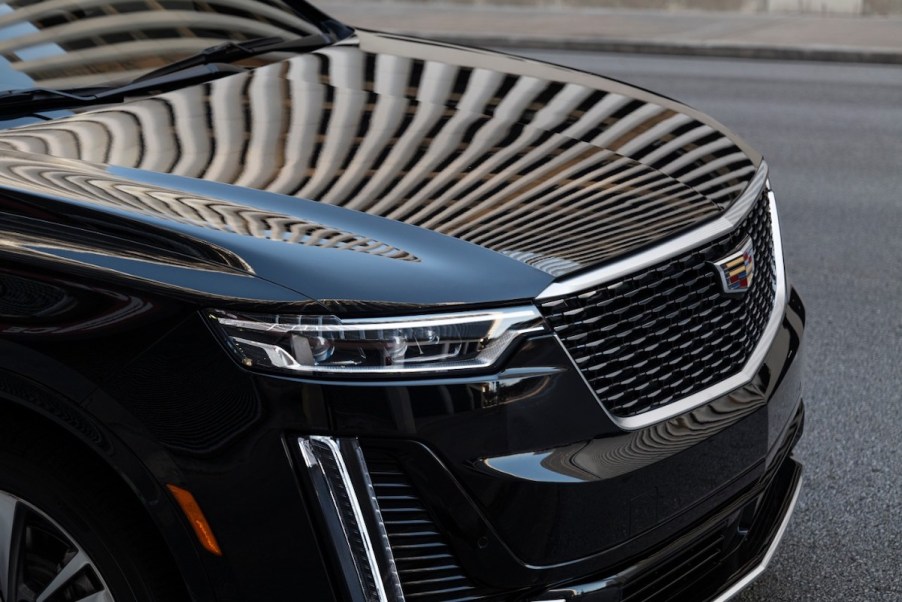
What Makes Cadillac’s Super Cruise Technology Special?
Technology has grown exponentially in the automobile world in recent years, and every brand on the market is looking for its piece of the action. Brands must develop and produce significant technology that brings in consumers and keeps it a pace above the rest. And with the introduction of Cadillac’s Super Cruise technology, innovation is more accessible than ever. Let’s see Cadillac’s latest update.
Cadillac updates its Super Cruise technology
Hands-free driving quickly became a reality for many consumers when Super Cruise technology debuted in 2017 on the 2018 Cadillac CT6. According to Car and Driver, the Super Cruise feature made the CT6 into a semi-autonomous vehicle, driving itself on highways.
Super Cruise technology works on a highway network system throughout the country, which has been specially mapped by Cadillac. As Super Cruise is not designed to handle intricate maneuvers, it is only designed to work on divided highways. When activated, Super Cruise drives the car without assistance from the driver.
The last few years have given Cadillac the chance to update and innovate its Super Cruise technology. By the end of 2020, the world will see an updated version of Super Cruise technology that is somehow even better than before.
Not just able to excel, brake, and maintain its lane, Super Cruise will now be updated to include automated lane change. Super Cruise will use new rear-facing sensors to determine appropriate space when changing lanes. Super Cruise’s GPS and LiDAR mapping precision is also extended to now include 200,000 drivable highways.
What sets Cadillac’s Super Cruise apart
Unlike adaptive cruise control, which can automatically adjust your speed on the highway, Super Cruise drives the vehicle on the highway. According to Cadillac, to use Super Cruise, Cadillac owners must first activate adaptive cruise control. If you are on a compatible highway, a Super Cruise symbol will illuminate on the dashboard.
To active Super Cruise, drivers press the “Super Cruise” button and wait for the symbol to illuminate green. Once the symbol is green, drivers can fully remove their hands from the steering wheel. And just like regular cruise control, it only takes a press of the brake pedal or a press of the “Super Cruise” button to deactivate the feature.
When Super Cruise first debuted on the roads, it immediately set itself apart from brands that had been in the semi-autonomous-driving game for years. Unlike Tesla or Mercedes-Benz, the 2018 CT6 didn’t require drivers “to keep a hand on the wheel or retake control of the car after a few seconds.” It would be possible to use Super Cruise to drive the car for hours without any intervention.
The evolution of Super Cruise: where buyers will find it
While the 2018 Cadillac CT6 sedan was the first (and only) vehicle equipped with optional Super Cruise, it’s clear that the CT6 was only a part of Cadillac’s plan. The CT6 is no longer available in the lineup after the 2020 model year, as Cadillac reworks its lineup. And with this reconfiguration comes the rebirth of Super Cruise. While Super Cruise won’t be found in the CT6 anymore, buyers can opt for it in all-new CT4 and CT5 models and the redesigned 2021 Escalade.
According to JD Power, Cadillac won’t keep its impressive Super Cruise technology to itself either. While Cadillac may have been the guinea pig of the high-end technology, parent company General Motors “plans to extend the hands-free technology to 22 vehicles by 2023.” And rumor has it, the first non-Cadillac vehicle with Super Cruise capabilities will be the Chevrolet Bolt EUV (a new electric SUV).
As new technology becomes cheaper to produce over time, it makes sense that GM would begin to extend its reach to its other brands. This technology is an enormous stride for GM as a consumer-driven company, which will now start to take its place among more luxury-driven, technology-forward brands. With the introduction and evolution of Super Cruise, the future of technology appears much more accessible.


